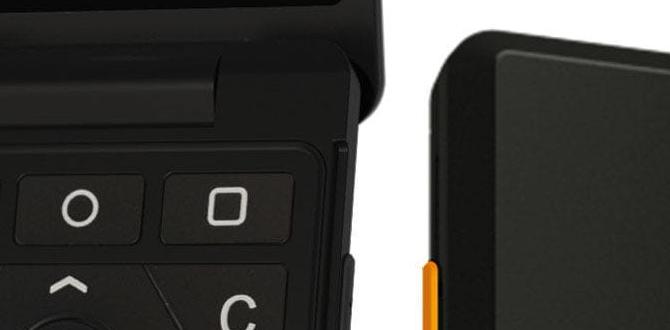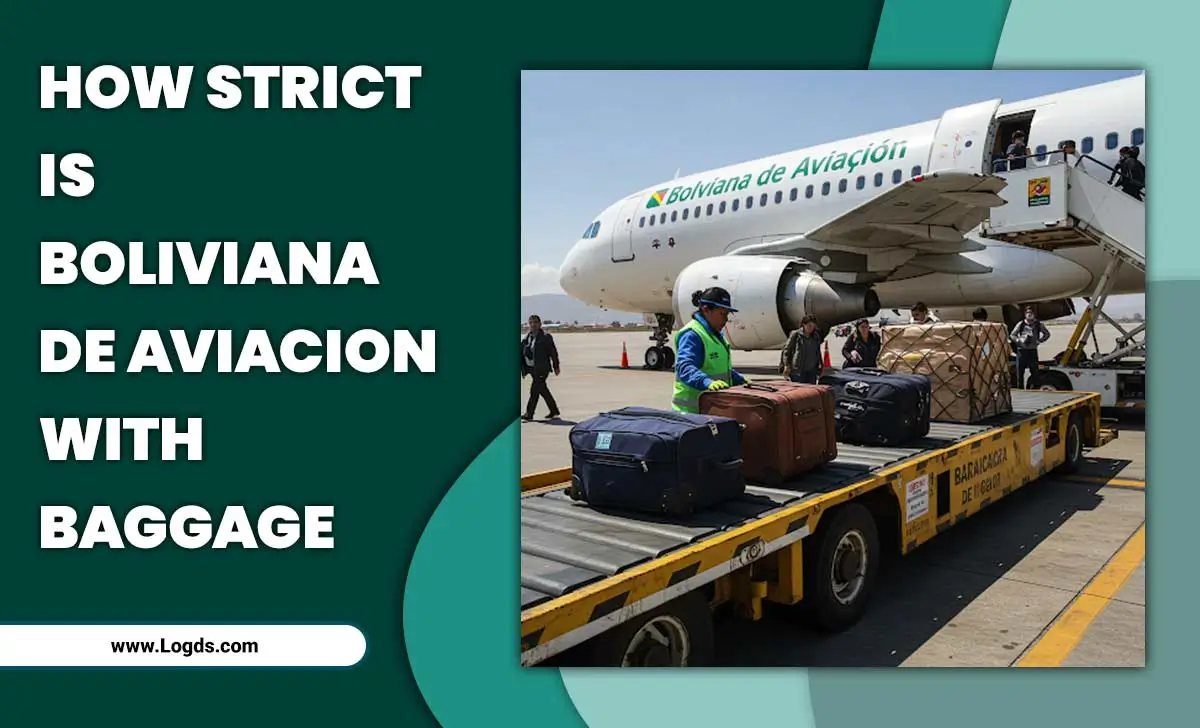Master a Brazil one-week itinerary on a budget with this guide. Discover essential tips for affordable travel, accommodation, food, and experiences to make your dream trip a reality without breaking the bank. This plan focuses on maximizing your experience and minimizing costs.
Planning a trip to Brazil can feel overwhelming, especially when you’re watching your budget. You dream of vibrant culture, stunning landscapes, and delicious food, but the thought of expenses can dim that excitement. It’s a common worry for many travelers, but I’m here to tell you it’s entirely possible to experience the magic of Brazil without emptying your wallet.
This guide will walk you through a fantastic one-week itinerary packed with proven budget essentials. We’ll cover smart ways to travel, eat, and explore, ensuring your Brazilian adventure is unforgettable and affordable. Get ready to discover how to see the best of Brazil, step-by-step!
Your Budget-Friendly Brazil One-Week Itinerary: The Essentials
Embarking on a week-long adventure in Brazil doesn’t have to be an extravagance. With careful planning and a focus on smart choices, you can experience this incredible country’s highlights while keeping your expenses in check. This itinerary is designed for beginners, offering a taste of Brazil’s diverse attractions without requiring a huge budget. We’ll focus on a manageable itinerary, prioritizing experiences that offer the most value and enjoyment.
Day 1-3: Rio de Janeiro – The Marvelous City
Rio de Janeiro is often the first stop for many, and for good reason. It buzzes with energy, stunning natural beauty, and iconic landmarks. While it can seem pricey, smart choices make it budget-friendly.
Getting Around: Rio has a decent public transportation system. Use the metro for longer distances and buses for shorter trips. Ride-sharing apps are also available and can be cost-effective, especially if shared. Avoid most taxis unless absolutely necessary or booked through a reputable service.
Accommodation: Look for hostels in areas like Copacabana, Ipanema, or Botafogo. Many offer private rooms as well as dorms, providing comfort at lower prices. Consider guesthouses (pousadas) in quieter neighborhoods for a more local feel. Websites like Hostelworld and Booking.com are great for finding deals.
Must-Do (Budget-Friendly):
Copacabana and Ipanema Beaches: These world-famous beaches are free to enjoy. Pack your own snacks and drinks to save money. Relax, swim, play beach volleyball, or simply soak in the vibrant atmosphere.
Selarón Steps (Escadaria Selarón): This colorful tiled stairway is a stunning piece of art and a fantastic photo opportunity. Entry is free.
Parque Lage: A beautiful public park with lush gardens, a historic mansion, and scenic walking trails. It offers incredible views of the Christ the Redeemer statue in the distance. Free entry.
Sugarloaf Mountain (Pão de Açúcar) – View from afar: While the cable car ride is expensive, you can still appreciate its majesty from various viewpoints, including Praia Vermelha (Red Beach). For a budget-friendly alternative to the summit, consider taking a more affordable hike or enjoying the view from below.
Christ the Redeemer (Cristo Redentor) – View from afar: Similar to Sugarloaf, the trip up can be costly. However, you can get excellent views of the iconic statue from many points in the city, especially from Corcovado National Park trails (check park fees beforehand) or even from some high-rise buildings. Sometimes, a boat trip offers distant, iconic views.
Food: Eat like a local! Seek out “lanchonetes” (snack bars) for affordable and delicious pastéis (savory pastries), coxinhas (fried chicken croquettes), and açaí bowls. Look for “prato feito” (PF) meals – set lunches that are filling and inexpensive. Enjoy fresh fruits from street vendors. For a treat, try a tapioca crepe from a street stall.
Day 4-5: Foz do Iguaçu – The Majestic Waterfalls
The Brazilian side of Iguazu Falls offers breathtaking panoramic views of this natural wonder. While the park has an entrance fee, the experience is unparalleled and worth budgeting for.
Getting There: The most budget-friendly way to travel from Rio to Foz do Iguaçu is by overnight bus. It’s a long journey (around 18-20 hours) but saves on accommodation costs and travel time. Alternatively, look for budget airline deals well in advance.
Getting Around: Foz do Iguaçu town has a local bus system that can take you to the park entrance and other attractions.
Accommodation: Hostels and budget guesthouses are readily available in Foz do Iguaçu town. Pousadas offer a relaxed atmosphere.
Must-Do (Budget-Friendly):
Iguazu National Park (Brazilian side): The main attraction. Purchase your ticket and spend hours walking the boardwalks, marveling at the sheer force and beauty of the falls. The main trail offers incredible vistas and is very well-maintained.
Parque das Aves (Bird Park): Located conveniently near the park entrance, this is a fantastic conservation project where you can walk through large aviaries and see diverse South American bird species up close. It has an entrance fee, but it’s a wonderful experience.
Itaipu Dam: One of the world’s largest hydroelectric dams. You can take a structured tour to learn about its construction and operation. While there’s a fee, it’s a impressive feat of engineering and provides a different perspective on local resources.
Food: Local restaurants in Foz do Iguaçu offer traditional Brazilian cuisine at reasonable prices. Look for “churrascarias” that offer an “all-you-can-eat” grill experience at a fixed price, often including a salad bar. Supermarkets are great for stocking up on snacks and picnic supplies for your park visit.
Day 6-7: Salvador – Culture and History
Salvador da Bahia is the heart of Afro-Brazilian culture, known for its vibrant music, colonial architecture, and rich history. It offers a different pace and a deeply engaging cultural experience.
Getting There: From Foz do Iguaçu, flying is the most practical option for a one-week trip. Book flights in advance to get the best prices. Alternatively, very long bus journeys are possible, but not recommended for a short itinerary.
Getting Around: Salvador’s historic center, the Pelourinho, is best explored on foot. For other areas, local buses and ride-sharing apps are available.
Accommodation: Hostels and budget pousadas in the Pelourinho or the nearby Santo Antônio Além do Carmo neighborhood offer character and affordability. Staying in these areas allows for easy exploration of key sights.
Must-Do (Budget-Friendly):
Pelourinho: Wander through the UNESCO World Heritage historic center. Admire the colonial architecture, colorful buildings, and cobblestone streets. It’s free to explore.
Elevador Lacerda: This iconic elevator connects the Upper City to the Lower City, offering fantastic views of the bay. The ride itself is very cheap.
Mercado Modelo: Located in the Lower City, this market is a great place to find local crafts, souvenirs, and art. Even if you don’t buy anything, it’s a lively place to experience.
Bonfim Church (Igreja do Bonfim): Famous for its colorful ribbons tied around the gates, said to grant wishes. A significant spiritual site. Entry is typically free, though donations are welcome.
Farol da Barra (Barra Lighthouse): A beautiful spot to watch the sunset and explore the coastline. The lighthouse area and surrounding promenade are free to access. There’s a small fee to enter the museum inside if you wish.
Food: Salvador is famous for its Bahian cuisine. Try “acarajé” (black-eyed pea fritter) and “vatapá” (creamy fish or shrimp stew) from street vendors, especially in the Pelourinho. Look for “restaurantes por quilo” (pay-by-weight restaurants) for a wide variety of affordable dishes. Enjoy fresh seafood and tropical fruits.
Budget Breakdown & Saving Tips
A one-week trip to Brazil on a budget requires smart financial planning. Here’s a general idea of where your money might go and how to keep costs down.
| Category | Estimated Cost (USD) | Budget Tips |
| Flights | $500 – $1000+ | Book 3-6 months in advance. Be flexible with dates and airports. Use flight comparison sites. Consider budget airlines for domestic flights, but factor in baggage fees. |
| Accommodation | $20 – $50 per night | Stay in hostels (dorm beds or private rooms), budget guesthouses (pousadas), or Airbnb rooms. Look slightly outside prime tourist zones. Book in advance for better rates. |
| Food | $20 – $40 per day | Eat street food, local markets, “prato feito” meals, and “restaurantes por quilo.” Limit sit-down restaurant meals. Cook some meals if your accommodation has a kitchen. Drink tap water where safe, or filtered. |
| Local Transport | $5 – $15 per day | Utilize public buses and metros. Walk when possible. Use ride-sharing apps judiciously. Overnight buses save on accommodation. |
| Activities & Entrances | $50 – $150 total | Prioritize free activities (beaches, parks, walking tours). Choose one or two “splurge” attractions. Look for combo tickets or city passes if available and cost-effective. |
| Miscellaneous | $50 – $100 | Souvenirs, personal items, tips, etc. |
| Total Estimated | $700 – $1700+ | This is a rough estimate and can vary significantly based on your spending habits, origin city, and chosen comfort levels. |
Essential Budget Travel Hacks for Brazil
Travel in the Shoulder Season: Avoid peak times like Christmas, New Year, Carnival, and major holidays. Prices for flights and accommodation tend to be lower outside these periods.
Embrace Local Cuisine: Street food and local markets offer authentic flavors at a fraction of the cost of tourist-oriented restaurants.
Utilize Public Transport: Buses and metros are your best friends for getting around cities affordably. Investigate multi-day transport passes if they offer savings for your itinerary.
Free Activities are Abundant: Brazil boasts incredible natural beauty and vibrant street life. Beaches, parks, public squares, and hiking trails are often free and provide rich cultural experiences.
Stay Hydrated Smartly: Carry a refillable water bottle. While tap water safety varies by region, many hotels and hostels offer filtered water. Purchasing large bottles of water from supermarkets is cheaper than buying small ones frequently.
Learn Basic Portuguese Phrases: Knowing even a few phrases can help you navigate more easily, potentially haggle respectfully in markets, and connect better with locals, often leading to better recommendations and prices.
Consider Overnight Buses: For longer distances between cities, overnight buses can be a significant money-saver, eliminating the need for a hotel night. They are generally safe and comfortable enough for budget travelers.
Book in Advance: Flights and popular accommodations should be booked as early as possible for the best prices. Last-minute bookings often come with a premium.
Travel Insurance: While an upfront cost, it’s crucial for peace of mind. It covers medical emergencies, trip cancellations, and lost luggage, saving you immense costs if something goes wrong. Reputable providers like World Nomads or SafetyWing are good options to research.
Pack Light: Avoid excess baggage fees by packing only essentials. This also makes moving between locations much easier.
Be Mindful of Safety: While exploring budget-friendly options, always prioritize your safety. Stick to well-lit areas, be aware of your surroundings, and avoid displaying expensive items. Consult official travel advisories, such as those from the U.S. Department of State, for current safety information.
Packing Essentials for Your Budget Trip to Brazil
When traveling on a budget, efficient packing is key. You want to be comfortable and prepared without carrying unnecessary items that could incur extra fees or make transit difficult.
Lightweight Clothing: Breathable fabrics like cotton and linen are ideal for Brazil’s climate. Pack versatile items that can be layered.
Comfortable Walking Shoes: You’ll be doing a lot of exploring on foot.
Sun Protection: Sunscreen, a wide-brimmed hat, and sunglasses are essential. The sun is strong!
Insect Repellent: Especially important for visiting natural areas like Iguazu Falls.
Basic First-Aid Kit: Include any personal medications, bandages, antiseptic wipes, and pain relievers. For travelers who might need them, discreet and comfortable solutions like adult incontinence products can offer peace of mind for long journeys or unexpected situations, ensuring comfort and confidence. Similarly, for families traveling with young children, having appropriate child diapers readily available is a practical necessity.
Reusable Water Bottle: Essential for staying hydrated and reducing waste.
Portable Power Bank: To keep your phone charged for navigation and photos, especially when out all day.
Small Backpack or Daypack: For carrying essentials during daily excursions.
Travel Adapter: Check the plug type for Brazil (Type N is common, though others may be present) and ensure your devices are compatible.
Quick-Dry Towel: Useful for hostels or impromptu beach visits.
Copies of Important Documents: Passport, visa (if applicable), flight bookings, and hotel reservations. Keep digital copies as well.
Sample Daily Itinerary Breakdown (Rio Focus)
This section provides a more detailed look at how a budget-conscious day in Rio might unfold, emphasizing free or low-cost activities and food options.
Rio de Janeiro: A Budget Traveler’s Day
Morning (7:00 AM – 10:00 AM):
Wake up, have a simple breakfast at your hostel or a local “padaria” (bakery) – a pão na chapa (toasted bread with butter) and a cafezinho (small coffee) is very affordable.
Head to Copacabana Beach. Enjoy a walk along the iconic mosaic sidewalk, watch the locals exercise, and take a refreshing dip in the ocean.
Cost: Breakfast $3-5, Beach access: FREE.
Late Morning/Lunch (10:00 AM – 1:00 PM):
Walk or take a short bus ride to the Selarón Steps. Spend time admiring the mosaics and taking photos.
For lunch, find a local “lanchonete” near Lapa or Santa Teresa (accessible from Selarón Steps). Order a “prato feito” or a delicious pastél.
Cost: Lunch $5-10.
Afternoon (1:00 PM – 5:00 PM):
Take a bus or metro to Parque Lage. Explore the beautiful botanical gardens, the historic mansion, and enjoy the tranquil atmosphere. You can often see Christ the Redeemer from here.
Alternatively, if you prefer more beach time, head to Ipanema Beach. Find a spot, relax, and people-watch.
Cost: Park entrance: FREE (or minimal donation), Transport $1-3.
Late Afternoon/Sunset (5:00 PM – 7:00 PM):
As the sun begins to set, head towards Arpoador Rock (between Ipanema and Copacabana) for a spectacular and free sunset view. It’s a popular spot where people often clap as the sun dips below the horizon.
Cost: FREE.
Evening (7:00 PM onwards):
For dinner, explore street food options. Try a cheesy “pão de queijo” or a refreshing “açaí na tigela” which can serve as a light meal. You can also find great tapioca stalls.
If you’re feeling energetic, explore the vibrant nightlife in Lapa, but be mindful of your budget and safety. Many bars have a small cover charge or minimum spend.
Cost: Dinner $5-15, Drinks (optional) $5-20.
This sample day demonstrates how to enjoy Rio’s iconic sights and atmosphere while keeping daily expenses to around $20-$50 USD per person.
Frequently Asked Questions
What is the cheapest time of year to visit Brazil?
The cheapest time to visit Brazil is generally during the shoulder seasons, specifically from March to May (after Carnival and before the winter chill) and from August to November (before the summer holidays). Prices for flights and accommodation are lower during these periods compared to peak times like December-February (summer and Carnival) and July (winter holidays).





